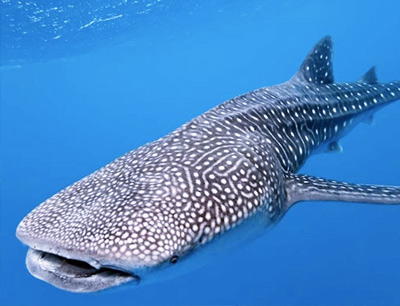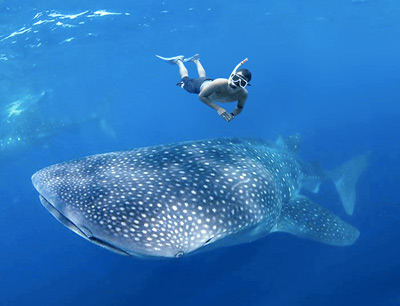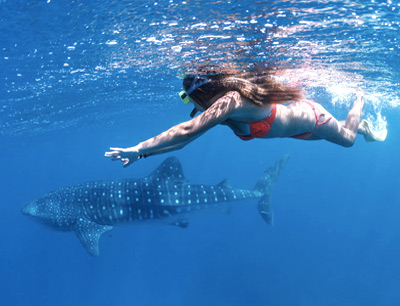Swimming with Whale Sharks
A magical experience only available in very few select sites around the entire world is coming to our tropical paradise. We are talking about snorkeling with whale sharks, the largest fish in the oceans. Measuring up to 14 meters (45ft) and weighing 11 tons there is no other fish alive that can even come close to them (whale sharks are a fish, unlike real whales which are mammals). However these oceanic titans are nothing to be afraid of; despite their massive size and 3-5ft wide mouths they only feed on microscopic plankton and their behavior reflects the true nature of these gentle giants.
Season
Every year during the warm summer months of May through September dozens if not hundreds of these incredible animals congregate in the calm seas North of Isla Mujeres to feed on fish roe. The official season is considered June to August since this is when there are more whale sharks and it is almost guaranteed that you’ll find them. We recommend August as the best month to go since the weather is nicest and there are still plenty of whale sharks in the area and much less tourism compared to June and July.
The Tour
The only way to reach the whale shark sanctuary is by boat; tours usually happen aboard a small speedboat for 6 to 10 guests plus a guide and crew. The tours begin between 6 and 7am with orientation and gear fitting. Once in the boat it takes between 1 and 1 and a half hours to reach the site, and once there you can remain there until everyone in the boat is satisfied or 2pm at the latest. The tour generally lasts between 6 and 8 hours, although some tours also include visits to Contoy Island or Isla Mujeres as part of the experience making for a longer day.
During your time in the whale shark sanctuary tour guests get to enjoy the company of anywhere between 10 to 30 of these animals, or even more, as the record is almost 300 in a day. The rules here establish that only two guests and the guide can be in the water at any time, most tour companies therefore establish a rotation of guests usually in 10 or 15 minute turns. But the adventure isn’t just in the water, you can still see the sharks from the boat as they don’t shy away from showing themselves and swimming up to the boat, an excellent opportunity to compare their size to the boat’s. And while this tour is all about the whale sharks, keep your eyes open because there are many more things out there. Giant mantas are a relatively common sight as they also feed with whale sharks, one can also see green and hawksbill turtles and a variety of dolphins.
Rules
While whale sharks are generally harmless they remain wild animals so it is important to respect them for their and our safety. Whale sharks are also an endangered species and are protected by law in México and internationally. Whenever we are in the presence of a whale shark we are obligated to follow these rules:
- Mandatory life jacket use
- Never touch the whale shark - or any other animal we might find
- Maintain a minimum distance of 5 meters (15ft) between you and the animal
- Controlled entrance to the water - do not dive in, do not splash
- Follow your guide at all times
- Do not dive under
- Do not use sunblock or other skin oils
- Flash and video lights are not allowed
- Drones are prohibited
- Do not feed the animals
- Do not litter
Recommendations
- Wear light, comfortable pants and long sleeve shirts to protect yourself from the sun
- Bring a hat and sunglasses
- If you own one, bring a gopro or other waterproof camera
- If the tour you booked does not include snacks or a meal bring some
- Bring sunblock but only for after the whale shark encounter
- Bring a towel
- If you are prone to seasickness take some medicine before you get on the boat
- Bring some cash for tips and souvenirs
So if your visit coincides with the sighting season of this mighty animal you must not let this opportunity pass. And if not, well it sounds like you need to plan another visit that does coincide so you can live this amazing experience and join the select few that can say they have swum with the world’s largest fish.
Find more information in the following links:







